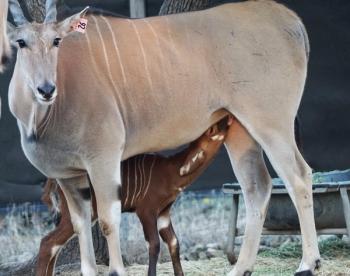
New H5N1 swine studies underway
New research projects funded to combat avian influenza in swine focus on vaccine development, transmission risks, and biosecurity measures.
With the appearance of highly pathogenic avian influenza (HPAI) H5N1 in United States cattle and swine, the Swine Health Information Center (SHIC), the Pork Checkoff, and the Foundation for Foods & Agriculture Research (FFAR) are funding 10 new projects to improve prevention, preparedness, mitigation, and response capabilities for HPAI H5N1. The projects, which are being conducted by various universities across the country, are part of the H5N1 Risk to Swine Research Program, a $4 million research program and joint initiative of the 3 organizations.1
The 10 projects, totaling $2.1 million in funding, address vaccine development and cross-protection, clinical presentation of swine in different production phases, potential for mammary transmission, diagnostic surveillance, introduction and transmission risks, and biosecurity practices.1,2
“Funding timely research is essential to drive action for emerging disease prevention, preparedness, mitigation and response for the US swine industry,” Megan Niederwerder, DVM, PhD, executive director of SHIC, said in a news release.1 “We were very pleased with the overwhelming response to this research program, which received a record number of applicants.”
The studies focusing on vaccine development and cross-protection include2:
- “Development of a vaccine against highly pathogenic avian influenza viruses for use in pigs” at the University of Nebraska-Lincoln: Is focusing on developing a vaccine strategy for inducing an immune response in swine
- “Evaluation of cross-protective N1 swine antibodies against HPAI H5N1 clade 2.3.4.4b virus” at the University of Minnesota: Is evaluating whether natural infection with endemic swine influenza A virus strains or immunization with commercial swine influenza A virus vaccines create immune cross-protection against HPAI H5N1
- “Role of Prior Immunity to endemic swine viruses on HPAI H5N1 infection in pigs” at the University of Georgia: Objective is to investigate whether existing influenza A vaccines or prior exposure to endemic swine flu strains affect infection susceptibility and transmission of H5N1 in swine.
Studies on the clinical presentation and mammary transmission of HPAI H5N1 in pigs represent the category with the greatest number of funded projects. These studies include2:
- “Preparing the US swine industry for HPAI H5N1: Quantifying and comparing H5N1 vs H1N1 spreading, shedding, and detection in groups with or without immunity to H1N1” at Iowa State University: Is comparing transmissibility, shedding, and detection of H5N1 vs H1N1 and assessing the impact of prior H1N1 infection on H5N1 infection and spread.
- “Pathogenesis and transmission studies in piglets and sows infected with different genotypes of 2.3.4.4b clade H5Nx viruses” at the Canadian Food Inspection Agency, National Centre for Foreign Animal Disease: Is assessing H5N1, H5N2, or H5N5 pathogenesis in weaned piglets via different exposure routes and intramammary infection in lactating sows and suckling piglets.
- “Evaluating H5N1 risk to swine: Mammary transmission and clinical presentation in lactating sows” at The Ohio State University: Is evaluating the replication potential of H5N1 strains in swine mammary tissue and clinical signs, shedding, and transmission in lactating sows and suckling piglets.
- “Investigation of susceptibility of porcine mammary gland to highly pathogenic avian influenza (H5N1) virus infection and transmission risk of virus from sows to nursing piglets” at the University of Saskatchewan in Canada: Is investigating whether H5N1 can replicate and transmit via the mammary route in swine and examining pathogenesis in farrowing sows.
All projects were started this summer and are expected to run 12 to 18 months.2 According to SHIC, study results will be shared with veterinarians and producers “as soon as they become available.”2
References
- FFAR, SHIC & Pork Checkoff fund H5N1 Swine Research Projects. News release. July 24, 2025. Foundation for Foods & Agriculture Research. July 24, 2025. Accessed August 18, 2025. https://foundationfar.org/news/ffar-shic-pork-checkoff-fund-h5n1-swine-research-projects/
- SHIC, FFAR, and Pork Checkoff fund 10 H5N1 Risk to Swine projects to address emerging disease threat. News release. Swine Health Information Center. July 22, 2025. Accessed August 18, 2025. https://www.swinehealth.org/shic-ffar-and-pork-checkoff-fund-10-h5n1-risk-to-swine-projects-to-address-emerging-disease-threat/
Newsletter
From exam room tips to practice management insights, get trusted veterinary news delivered straight to your inbox—subscribe to dvm360.






